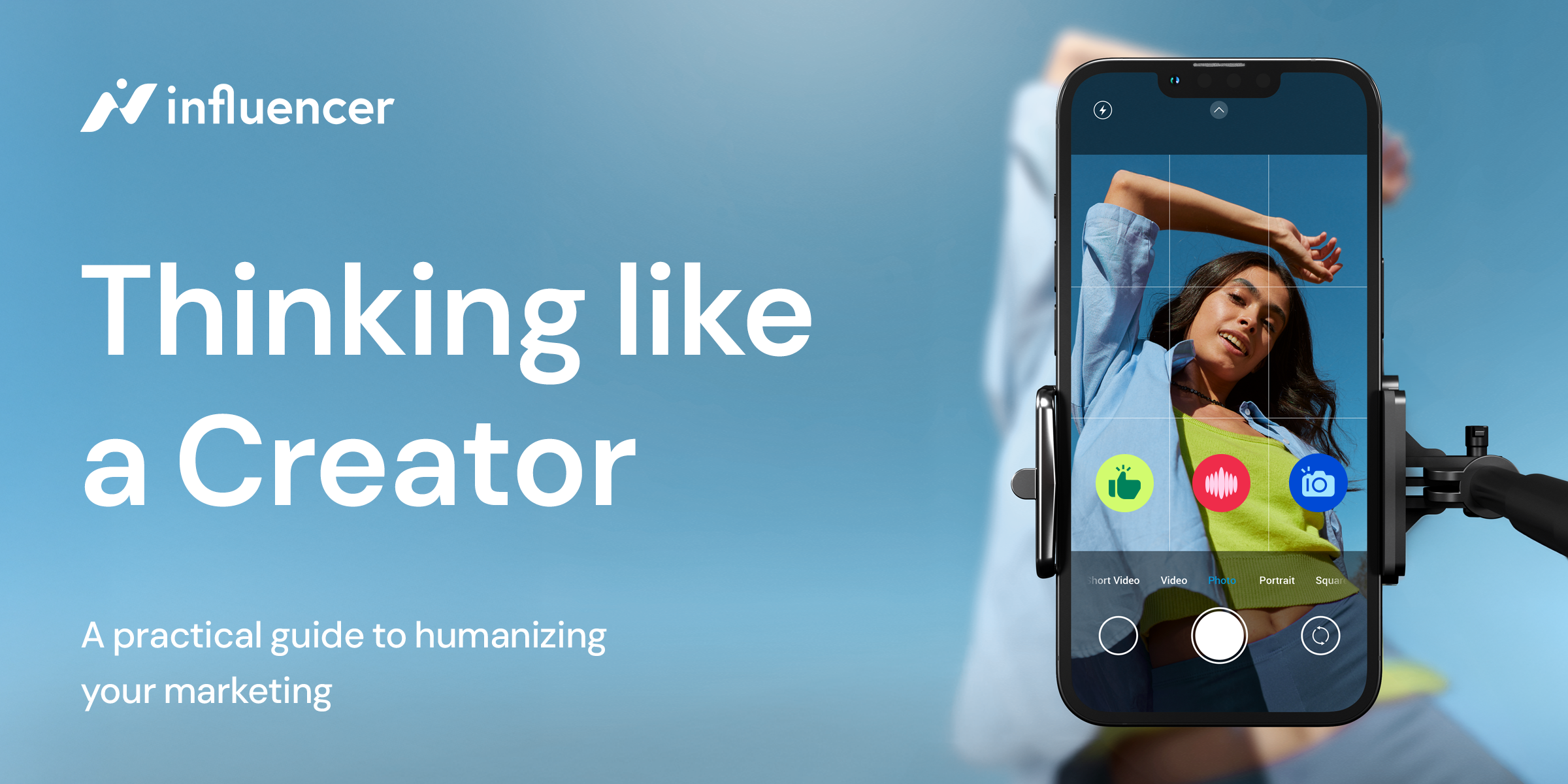
In the past, influencer marketing has come under scrutiny for being difficult to measure. Social media platforms didn’t previously deliver insights in the same way that they do now, and influencer marketing technology hadn’t developed to offer pre and post-campaign analysis.
But how times have changed. In recent years, influencer marketing technology has enabled brands to gain an in-depth understanding of how their campaigns are performing, and make more informed decisions.
We’re unpacking some of the ways we measure success at Influencer, and in the industry more broadly.
Measuring at different stages of campaigns
There are many elements that brands can measure within influencer marketing to monitor and analyse the success of their campaigns. These metrics come into play at different stages of campaigns, such as in the pre-campaign planning stage, ongoing during the campaign and once the campaign has been completed.
Pre-campaign
Prior to running an influencer marketing campaign, creator audience demographics can be assessed through social network APIs. Advertisers can draw on data to better understand a creator’s audience and how they match up to the brand’s target demographic.
At Influencer, via the Waves platform we are also able to look at things like historic content and creator performance data to get a clear view of how their content is likely to perform. We can then use this information to do high level creator and brand matchmaking in order to analyse and pair brands with top performing creators for their niche.
During the campaign
During the campaign, advertisers are also able to monitor campaign performance through real-time data, which allows us to make decisions around the campaign or pivot should another route make sense, based on a real-time understanding of how the campaign is currently performing.
Post-campaign
Post-campaign advertisers can analyse success using platform measurement tools combined with our in-house impact score and external technology. This success measurement is based on the key KPIs that advertisers are looking to achieve. Based on KPIs, methods may include measuring how consumers perceive your brand and looking at metrics like brand uplift, audience comments and community behaviours.
From here, we’re able to offer an objective perspective on how successful the campaign was, and use these insights to inform future creator campaigns.
How we measure influencer marketing success
Influencer marketing technology has long moved past vanity metrics and is now able to carry out in-depth analysis. At Influencer, we use a combination of in-house campaign performance analysis and partnerships with external research companies to offer our clients industry-leading insights that allow them to deeply analyse and understand the success of their campaigns.
Some of the key metrics we assess are:
The impact of content
Influencer’s in-house Impact Score is our unique way of measuring campaign performance. Our in-house measurement style is designed to take into account the value of a viewer’s engagement with our campaign content, rather than merely showing the volume of that engagement.
Our impact score is the sum of all engagements, each weighted by their own value; a value ascertained by looking back over years of campaign insights. The overall impact rate is the impact score divided by the reach of a campaign, to show the value of engagements as a factor of the number of people who saw the content. From here we can look at the CPIM, or cost of each individual ‘impact’, to measure how valuable the content truly was.
By partnering with a range of platforms and data providers, we’re able to pull from various resources to gain insight into content impact and creator authenticity. Impact is much deeper than reach, impressions and engagement. We look at things like brand uplift, audience wants and needs, audience comments and community analysis to assess how effective a campaign really is.
Analysing engagements
Engagement is the number of times the campaign content was interacted with in any way, and the engagement rate is the engagement divided by the cumulative audience.
However, at Influencer we’re not just interested in the amount of engagements, but also the quality of those engagements. We extract qualitative measures, analysing comments, audience perceptions and content impact to better understand consumer responses to campaign content.
Through one of our measurement partners, we are able to access a natural language processing tool, which enables us to understand the impact our campaign has had on the audience. By analysing the meaning of the comments left on our campaign content, we are able to assess why people liked the content (or disliked it), what they thought of the brand, whether they’re already a customer of the brand, and whether they intend to purchase a product.
Understanding how the content resonated within a particular niche
In some instances, the goal of a campaign will be to raise awareness within a specific niche and reach a highly targeted audience. This is notoriously challenging to measure, but through one of our partners we’re able to analyse comments from across a campaign to understand the meaning inherent within the language used, and then pull together the common language themes within that data.
The conversational themes we discover are then compared to a wider data set of 'everyday conversations' to understand by what factor our campaign's themes are more (or less) likely to appear in everyday use. This allows us to demonstrate the extent to which campaigns generate conversations on a particular topic, over and above that which we'd typically expect to see from that audience.
Audience size and alignment
Post-campaign, when measuring success, we look at the overall audience. This is the total combined unique audience of the creators on the campaign. This allows us to understand how many unique users saw the content, which in turn allows us to assess how effective that content was.
As a stand alone measure, it’s not something we place too much weight on. However, when combined with other insights like engagements and impact score, the size of an audience can be an important metric.
Analysing audiences is vital to the planning stages of a campaign, as it helps us measure the total combined audience of creators and what kind of audiences they’re reaching. It is crucial that audiences align, or brands can end up pushing content on deaf ears.
Digital Content Evaluation
Alongside our partners, we are also able to measure the performance of social content on key brand KPIs. The technology does this by mimicking the campaign's audience and exposing content to respondents within a controlled environment.
By doing so, we are able to measure brand uplift achieved by the content and look at how well-received each piece of content was.
Facebook Brand Survey Tests To Measure Brand Awareness
Facebook Brand Survey Tests provide a valuable way for us to benchmark content and creator performance across campaigns that run on Facebook and Instagram. Brand survey tests measure both people who had the opportunity to see your content and people in a control group.
This survey then calculates the incremental effect our content had on brand awareness, perception or recall.
Brand Uplift
A key KPI for many brands when running influencer marketing campaigns is brand awareness. We are able to measure this by working with partners who ask audiences questions on brand awareness, ad recall, product recall, purchase consideration and content performance.
We can ask questions like “do you recall the product being advertised?” and “were you more likely to purchase or consider purchasing the product?” to understand how the content is shifting consumer opinions.
These questions refer to specific paid ads, to assess how the audience has responded. These kinds of unsocial, less quantitative measures of data far better define campaign success than a save or share ever could. Using brand uplift assessments we can turn hugely qualitative assessment into quantitative measures, giving authentic collaborations a number and value that can be easily assessed and compared in their ‘success’.
These metrics help us assess the true success of a campaign. To learn more about how influencer marketing is evolving, download our unsocial media report.
More resources

New Creator Economy report urges brands to think like Creators - or risk being left behind.
Let’s work together

Let’s work together

Let’s work together

Let’s work together

Let’s work together

Let’s work together

Let’s work together

Let’s work together

Let’s work together

Let’s work together

Let’s work together

Let’s work together

Let’s work together

Let’s work together

Let’s work together

Let’s work together

Let’s work together

Let’s work together

Let’s work together

Let’s work together

Let’s work together

Let’s work together

Let’s work together

Let’s work together

Let’s work together

Let’s work together

Let’s work together

Let’s work together

Let’s work together

Let’s work together

Let’s work together

Let’s work together



.webp)
